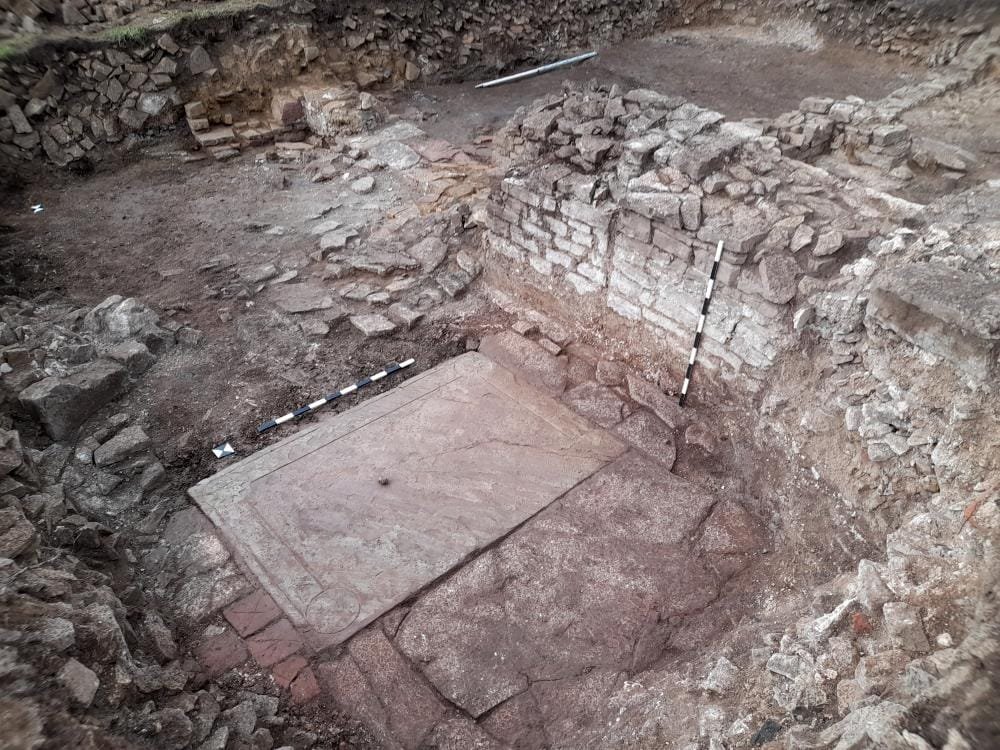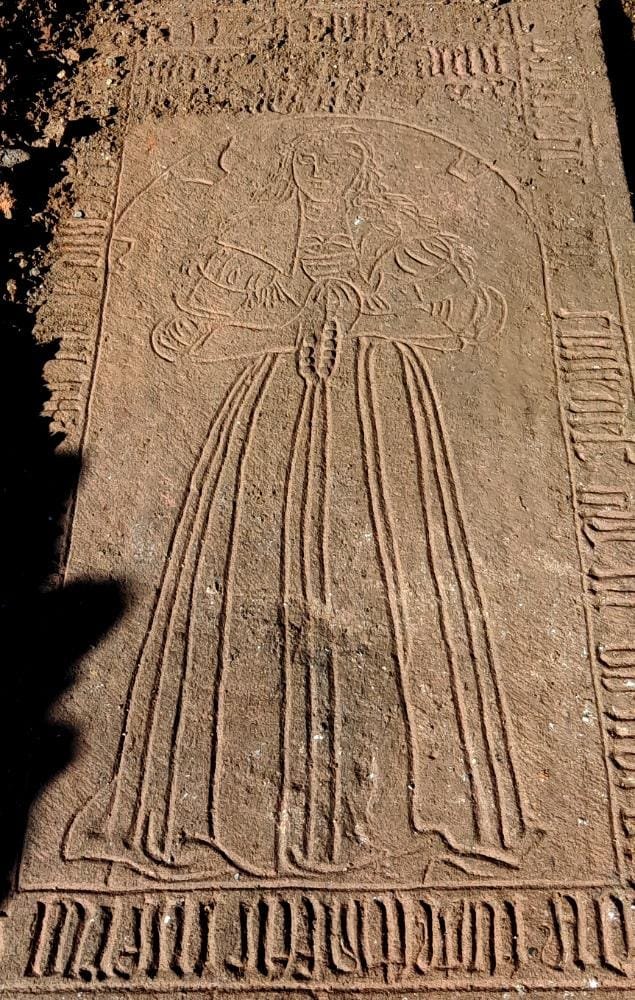Archaeologists in Germany have uncovered significant remains of the Himmelpforten Monastery. This monastery, founded in 1253 by the von Hartesrode noble family, served as an important religious, cultural, and economic center in the region until its downfall during the 16th-century Peasants’ War.
 The remains of the church of the former monastery with another gravestone. Credit: State Office for Monument Preservation and Archeology Saxony-Anhalt, Felix Biermann.
The remains of the church of the former monastery with another gravestone. Credit: State Office for Monument Preservation and Archeology Saxony-Anhalt, Felix Biermann.
The site, located in a picturesque valley at the foot of the Harz Mountains, was closely ᴀssociated with the Hermits of St. William and later the Augustinian Hermits. It also holds historical importance as a residence for the famed reformer Martin Luther, who visited the monastery on August 6, 1516. Until recent excavations, the monastery had largely disappeared, with only a few remnants like ponds and walls hinting at its past splendor.
The State Office for Monument Preservation and Archaeology (LDA) of Saxony-Anhalt, under the leadership of Professor Dr. Felix Biermann, began a systematic investigation of the site in 2023, with the support of the Federal Government Commissioner for Culture and the Media and the state of Saxony-Anhalt. Numerous local volunteers have also participated in the effort.
The excavations have uncovered a 130-foot (40-meter) long, three-aisled basilica with Gothic architectural features and remarkably well-preserved stone and tile floors. The church’s design and construction quality point to several phases of renovation, reflecting the monastery’s prominence during its peak. The cloister, located to the south of the church, had three wings surrounding a central courtyard. In the west wing, researchers found an advanced 14th-century hypocaust heating system, which directed warm air to the calefactory, a room designed to provide warmth for monks during the cold months.
 Preserved brick floor consisting of honeycomb-shaped individual panels. Credit: State Office for Monument Preservation and Archeology Saxony-Anhalt, Felix Biermann
Preserved brick floor consisting of honeycomb-shaped individual panels. Credit: State Office for Monument Preservation and Archeology Saxony-Anhalt, Felix Biermann
The cloister’s floors, made of stone slabs and hexagonal tiles, have also been uncovered, providing further evidence of the monastery’s impressive infrastructure. Such sophisticated heating systems were typically reserved for castles or the homes of wealthy city dwellers, making this find particularly notable.
In addition to structural elements, archaeologists have unearthed a wealth of artifacts, including fragments of stove tiles, book clasps, glᴀss and ceramic shards, pilgrim badges, coins, bronze styluses used for writing on wax tablets, and pressed metal fittings from sacred vestments.
One of the most remarkable discoveries is the pair of decorated gravestones found in the church’s nave, dating from the 15th and early 16th centuries. One gravestone marks the tomb of Claudia von Königstedt, a noblewoman who died in 1520, just before the Peasants’ War erupted. Her tombstone, featuring a depiction of Claudia in contemporary dress with long braided hair and a rosary, remains in excellent condition. It’s believed that her family made significant donations to the convent in exchange for her prominent burial location within the church.
 Grave slab of the noble Claudia von Königstedt from 1520. Credit: State Office for Monument Preservation and Archeology Saxony-Anhalt, Felix Biermann
Grave slab of the noble Claudia von Königstedt from 1520. Credit: State Office for Monument Preservation and Archeology Saxony-Anhalt, Felix Biermann
The Himmelpforten Monastery met its end during the Peasants’ War in 1525 when local farmers and citizens of Wernigerode stormed and looted the site. Led by a barber from the town, the rebels were part of a widespread uprising by peasants, urban lower classes, and lesser nobles against oppressive conditions. Historical sources confirm that the barber was later arrested and sentenced to death, though he was eventually pardoned and exiled.
The recent archaeological findings provide a clearer picture of the monastery’s size, construction phases, and the violent events that led to its abandonment. The discovery of a small hoard of gold coins linked to the plundering of the monastery during the revolt further emphasizes the significance of these turbulent times.
As the excavations continue until October 2024, researchers hope to uncover more about the monastery’s architectural evolution and the daily lives of its inhabitants.
State Office for Monument Preservation and Archaeology (LDA) of Saxony-Anhalt





